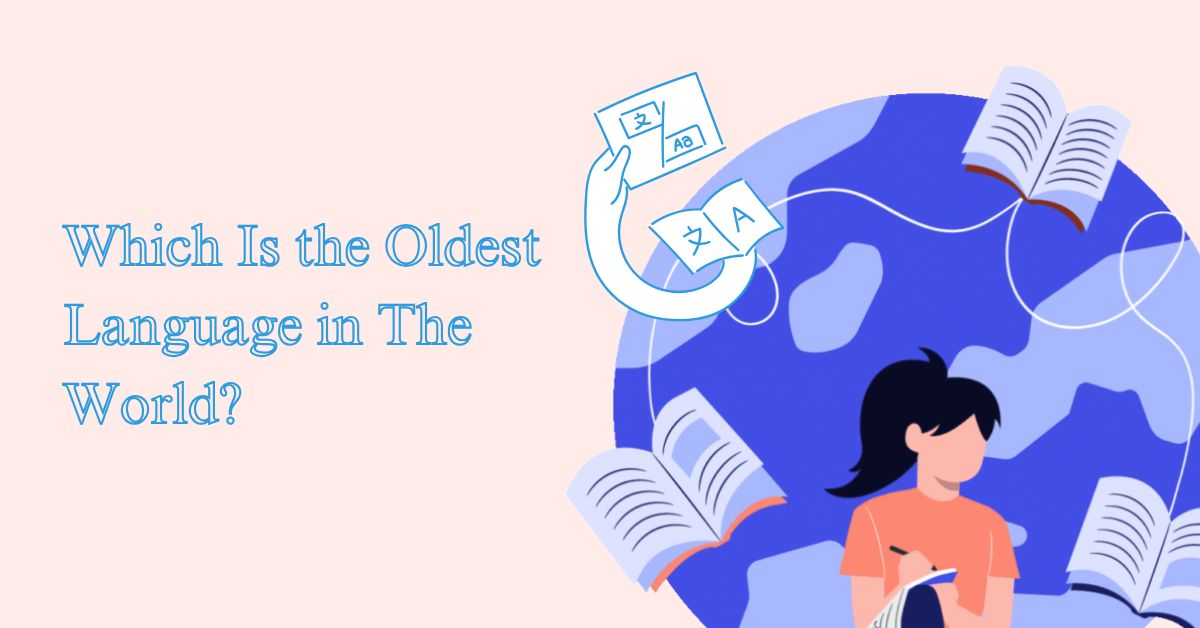Which Is the Oldest Language in The World?

Language has been the foundation of human civilisation, moving us ahead and forming the world we know today. As a translation company, we find it fascinating how languages have changed and grown over thousands of years.
But have you ever considered which language can declare itself the oldest in the world?
This blog post will look at some of the most ancient languages still spoken today, their importance, and how knowledge of these linguistic gems might help contemporary communication.
The Six Oldest Languages in the World
Although linguists disagree over the precise beginning of language, we can name some languages with remarkably extensive histories that nevertheless find usage in modern communication. Let's go through time to explore six world's oldest languages:
1.Egyptian (circa 4,700 years old)
Considered among the earliest languages in the world, Egyptian originated in 2690 BCE. Linguists have been able to study this intriguing language thanks in great part to the abundance of hieroglyphic inscriptions and texts left behind by the ancient Egyptians. Although ancient Egyptian is no more spoken, Coptic, the liturgical language of the Coptic Church in Egypt persists as the descendent.
2. Sanskrit (circa 3,500 years old)
With roots reaching almost 3,500 years, Sanskrit has been vital in the evolution of numerous Indian languages and had a major impact on many European languages. Mostly employed nowadays in Hindu religious rites and intellectual publications, Sanskrit is renowned for its sophisticated grammar and rich literature.
3. Greek (circa 3,500 years old)
Greek has given priceless contributions to Western literature, philosophy, and science and has a roughly 3,500 years past. From Homer's epic poetry to Plato and Aristotle, Greek has been the language of some of the most powerful works in human history.
4. Chinese (circa 3,300 years old)
Not only among the oldest languages, Chinese is also among the most often used nowadays having a written history going back to about 1250 BCE. Although its complex letters have changed over millennia, modern readers nonetheless find the Chinese writing system familiar. Spoken by around a billion people globally, Mandarin Chinese is the most often used variation.
5. Hebrew (circa 3,000 years old)
Hebrew has a distinct background, going back about 3,000 years. Originally lost for millennia, it was brought back in the 19th and 20th centuries and is today Israel's official language. This comeback is evidence of the continuing force of language and cultural identification.
6. Tamil (circa 2,300 years old)
Mostly prevalent in southern India and Sri Lanka, Tamil, a Dravidian language, boasts a rich literary legacy going back at least 300 BCE. Scholars think it is the oldest classical language that is still used today, and it's still doing very well in modern writing and media.
The Benefits of Learning Older Languages
These ancient languages give a tremendous amount of information about the vanished civilisations, their values and their everyday live. There are following reasons to understand antique languages:
- Classical languages provide a reader with an understanding of their society in its purest form.
- These languages enable us to develop a deeper understanding of how modern languages have evolved, and how they work within the current linguistic environment.
- Studying archaic languages is helpful for intellectual development and reveals entirely different views on the organization of languages and speech.
- They are origins of many scientific and medical words still used in developing languages.
Role of Translation Agency in Bridging Ancient and Modern Languages
As a translating agency, we know the importance of spreading the knowledge found in ancient languages:
- Academic Translations: We can help academics and researchers translate old books so that a larger scholarly audience may access them.
- Cultural Preservation: Offering translating services for ancient languages helps us to maintain cultural legacy and advance knowledge of past civilisations.
- Educational Materials: We can produce educational resources introducing students to ancient languages and their contemporary successors.
- Legal and Historical Document Translation: Our knowledge is rather valuable for modern utilisation of old records or historical legal papers.
- Literary Translations: Accurate and sophisticated translations allow us to encourage modern readers to enjoy old literature.
- Specialised Terminology: Our understanding of ancient languages can be extremely useful in sectors such as medicine, law, and science, where many terminologies have ancient roots.
Conclusion
Though languages like Egyptian, Sanskrit, Greek, Chinese, Hebrew, and Tamil stand out for their amazing lifetime and continuous importance, the search for the oldest language in the world is still under progress. Being a translating agency makes us glad to help close the distance between these old language gems and the contemporary society. By learning and keeping these languages alive, we not only honour our common human history, but we also learn useful things that can help us communicate and understand other cultures better now. Whether your company wants to engage with other cultures or you are a researcher reading ancient books, our knowledge of both ancient and current languages will enable you negotiate an intriguing world of cross-cultural communication.